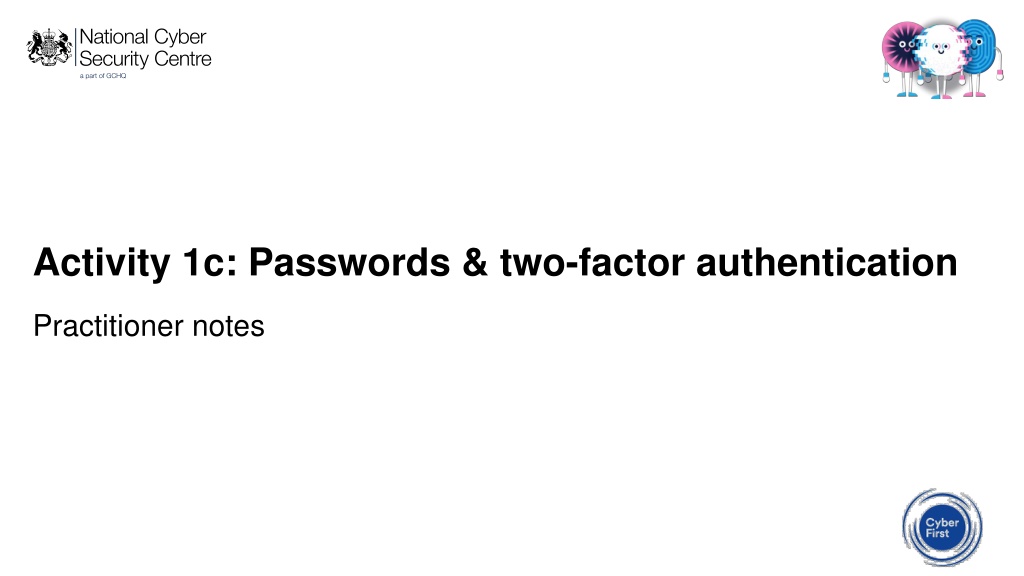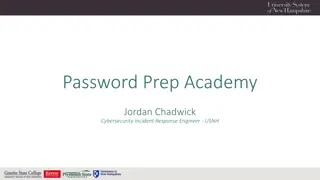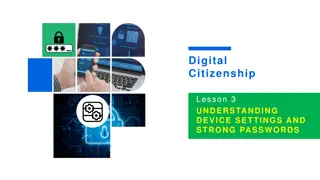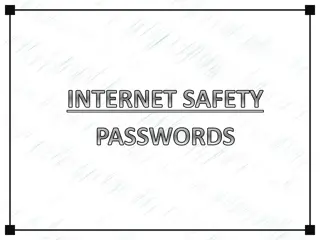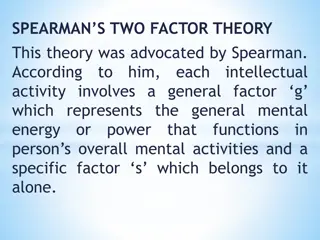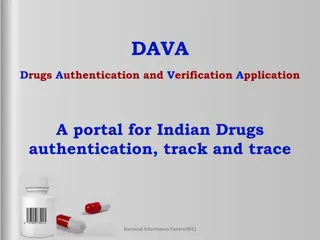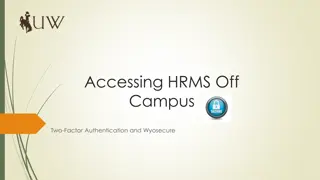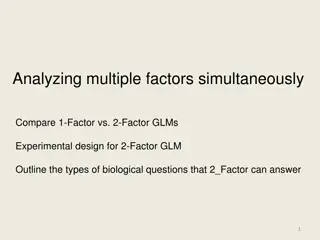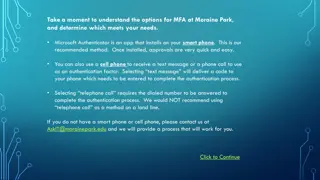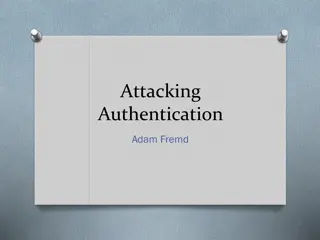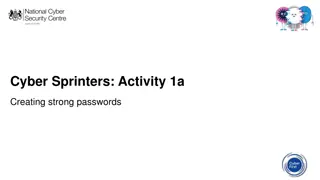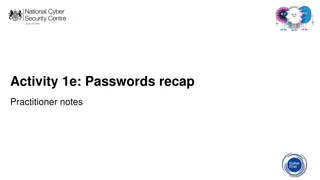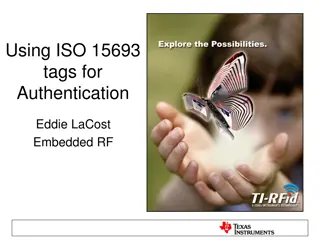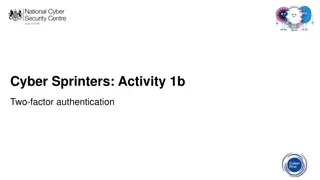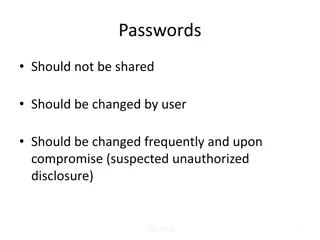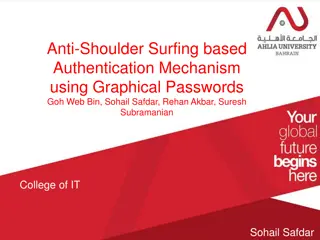Creating Strong Passwords and Using Two-Factor Authentication
This activity focuses on teaching children the importance of strong passwords and two-factor authentication through a fun game. Children learn to create a strong three-word passphrase and understand how 2FA enhances security. The game involves players placing word cards on a grid to form passphrases, with the added challenge of incorporating 2FA cards for enhanced protection. By engaging in this activity, children develop practical knowledge about cybersecurity measures in a playful manner.
Download Presentation

Please find below an Image/Link to download the presentation.
The content on the website is provided AS IS for your information and personal use only. It may not be sold, licensed, or shared on other websites without obtaining consent from the author. Download presentation by click this link. If you encounter any issues during the download, it is possible that the publisher has removed the file from their server.
E N D
Presentation Transcript
Activity 1c: Passwords & two-factor authentication Practitioner notes
Learning outcomes Children understand the importance of strong passwords and how to use them. Children understand the importance of two-factor authentication. Children understand how two-factor authentication relates to passwords.
Lesson notes This game will reinforce the idea of using three random words to create a strong password Two-factor authentication (also known as 2FA) is a way of adding an extra layer of security. The game can be played by two players, or by two teams of players.
Game instructions Cut out the small squares and place face down next to the grid. The object of the game is to create a three- word passphrase, either horizontally or vertically, by placing words on the white squares within the grid. Each player takes it in turn to turn over the top card in the pile, and places each word card on any white space on the grid. If a player creates a passphrase (ie three random words, either vertically or horizontally), they remove the cards (which are put aside), and write their names on the squares beneath. Players can place a word card on a white space that already has a name on it. If this creates another passphrase, then the names are overwritten by the new player. If a player picks up a 2FA card (so either the fingerprint, email or SMS card), they can place it next to any completed passphrase (ie on a red square), and add their name to all the boxes. Note that passwords that have been protected with a 2FA card are strong, and can t be overwritten by another player! Continue until all the cards are used. Whoever has the most named boxes on the grid at the end is the winner. In this example on the right, Daisy created the passphrase BeansMilkPig. However, Ed then created MilkRunningBeach, so gains a square from Daisy. Furthermore, his password is protected by the 2FA email square (placed on the red square at the bottom), so his squares can t be overwritten. Note that you can t put any cards on grey squares.
